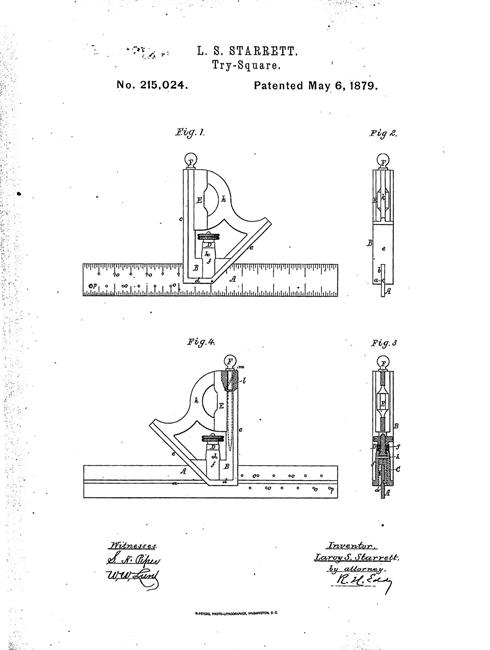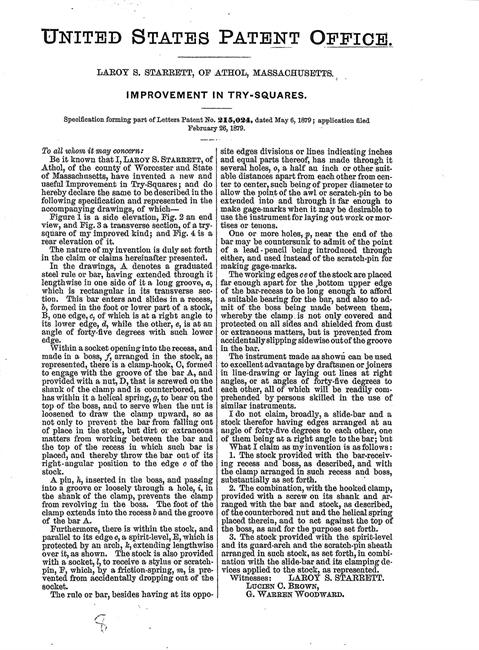ATHOL, MA, USA (2/26/2019) – One-hundred and forty years ago today, Laroy S. Starrett submitted his patent for the Combination Square.
“Be it known that I, Laroy S. Starrett, of Athol, of the county of Worcester and State of Massachusetts, have invented a new and useful Improvement in Try-Squares” the patent begins.
In his drawings, Starrett noted additions to the Try Square that he saw as improvements to the tool’s functionality. It’s unclear if he knew that this modification would create one of the most popular and commonplace tools used for creating angles in his industry.

It could be said that the success of the Combination Square was one of the only good points of Starrett’s early career. Before inventing the tool, his wife passed, leaving him to take care of his four children. He lost a good amount of his hearing, and was also fired from the Athol Machine Company. An unemployed and adrift Starrett worked on his inventions, settling on an idea for the Combination Square and pushing it into reality.
“I secured a foot lathe for my room and after I had made patterns, got castings and a blade for my combination square and took them to a nearby machine shop, engaged the best workman and stood by for two days until he got finished,” Starrett said. “The man was an expert toolmaker so when it was finished I asked, “Well, what do you think of it?” He said: “I would not give a damn for it.” But that did not discourage me. I knew his reason. He believed that the sliding blade in the square stock could not be ground sufficiently accurate to be depended upon, the difficulty being the then almost impossible task of grinding a perfect straight edge to form the blade, due to the heat generated in grinding. I believed the difficulty could be overcome, and it was.”
After invention comes production: Starrett knew next he needed to find a company that was capable of producing the squares in quantity. He ended up returning to the first shop that made his combination square, the Richardson Machine Shop in Athol.
Meanwhile, as mass production of the combination square proved profitable, the managers of the Athol Machine Company began to rethink their decision to fire Starrett. They offered him a higher position if he returned, and when Starrett declined they brought suit against him. Members of the Richardson Machine Shop became nervous and stopped production. Unable to convince the shop to continue making his tool, Starrett bought them out in 1880 and carried on. He countersued the managers of the Athol Machine Company and won. He bought another building across Millers River to expand production. In the end, all the fuss over the combination square brought Starrett to the building that would, more than 100 years later, be the headquarters for his global company.
